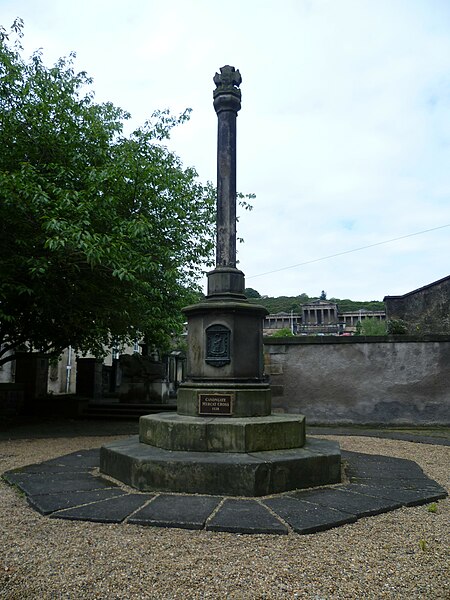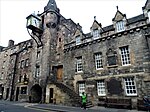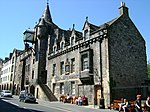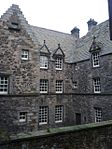The Canongate

The Canongate is a street and associated district in central Edinburgh, the capital city of Scotland. The street forms the main eastern length of the Royal Mile while the district is the main eastern section of Edinburgh's Old Town. It began when David I of Scotland, by the Great Charter of Holyrood Abbey c.1143, authorised the Abbey to found a burgh separate from Edinburgh between the Abbey and Edinburgh. The burgh of Canongate that developed was controlled by the Abbey until the Scottish Reformation when it came under secular control. In 1636 the adjacent city of Edinburgh bought the feudal superiority of the Canongate but it remained a semi-autonomous burgh under its own administration of bailies chosen by Edinburgh magistrates, until its formal incorporation into the city in 1856. The burgh gained its name from the route that the canons of Holyrood Abbey took to Edinburgh - the canons' way or the canons' gait, from the Scots word gait meaning "way". In more modern times, the eastern end is sometimes referred to as part of the Holyrood area of the city. The Canongate contains several historic buildings including Queensberry House, now incorporated in the Scottish Parliament Building complex, Huntly House (now the Museum of Edinburgh), the Canongate Tolbooth (now housing the People's Story Museum) and the Canongate Kirk, opened in 1691 replacing Holyrood Abbey as the parish church of the Canongate. The church is still used for Sunday services as well as weekday concerts.
Excerpt from the Wikipedia article The Canongate (License: CC BY-SA 3.0, Authors, Images).The Canongate
Canongate, City of Edinburgh Canongate
Geographical coordinates (GPS) Address Phone number Website Nearby Places Show on map
Geographical coordinates (GPS)
| Latitude | Longitude |
|---|---|
| N 55.951519 ° | E -3.179885 ° |
Address
The People's Story Museum
Canongate 163
EH8 8BN City of Edinburgh, Canongate
Scotland, United Kingdom
Open on Google Maps











